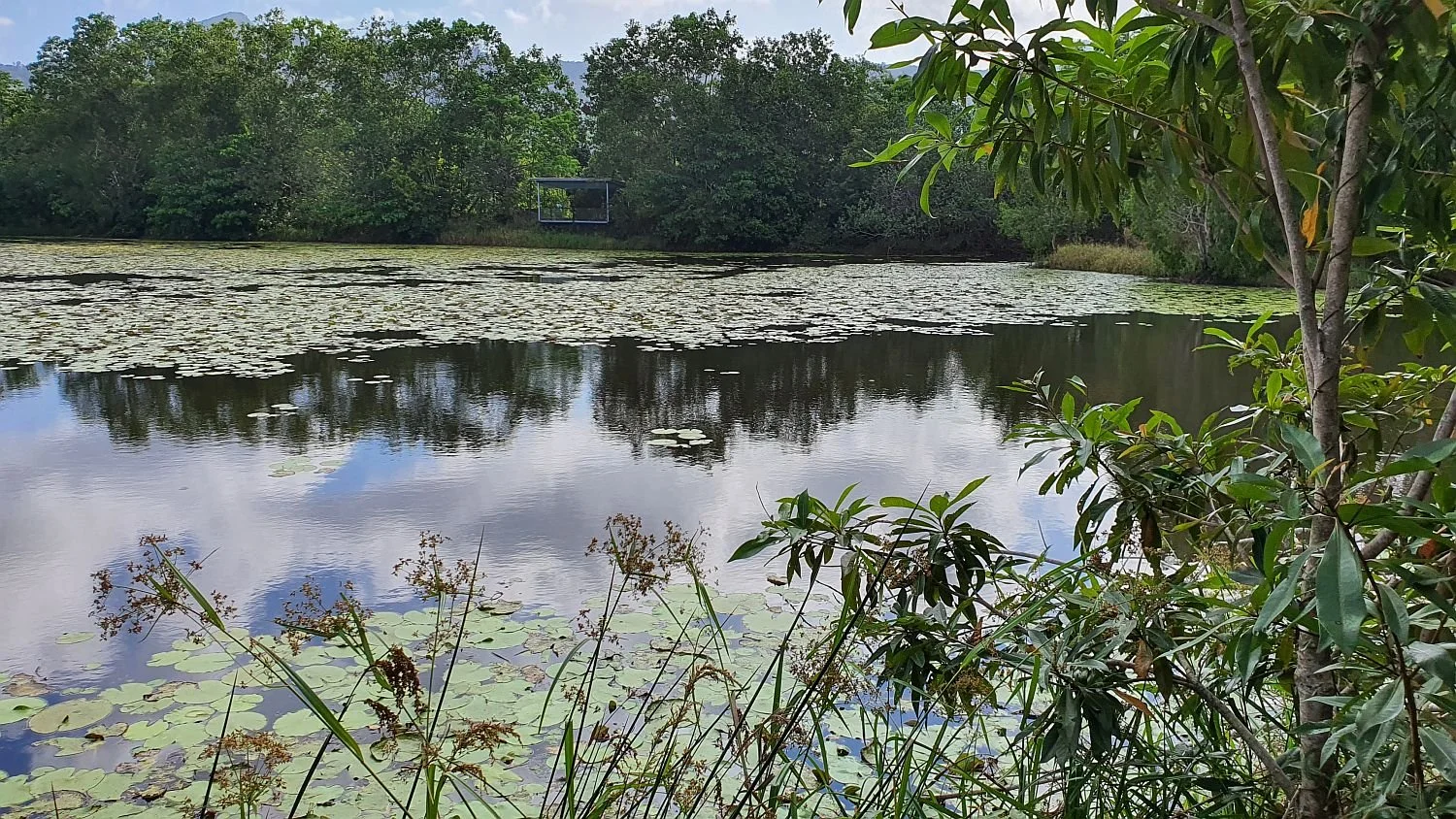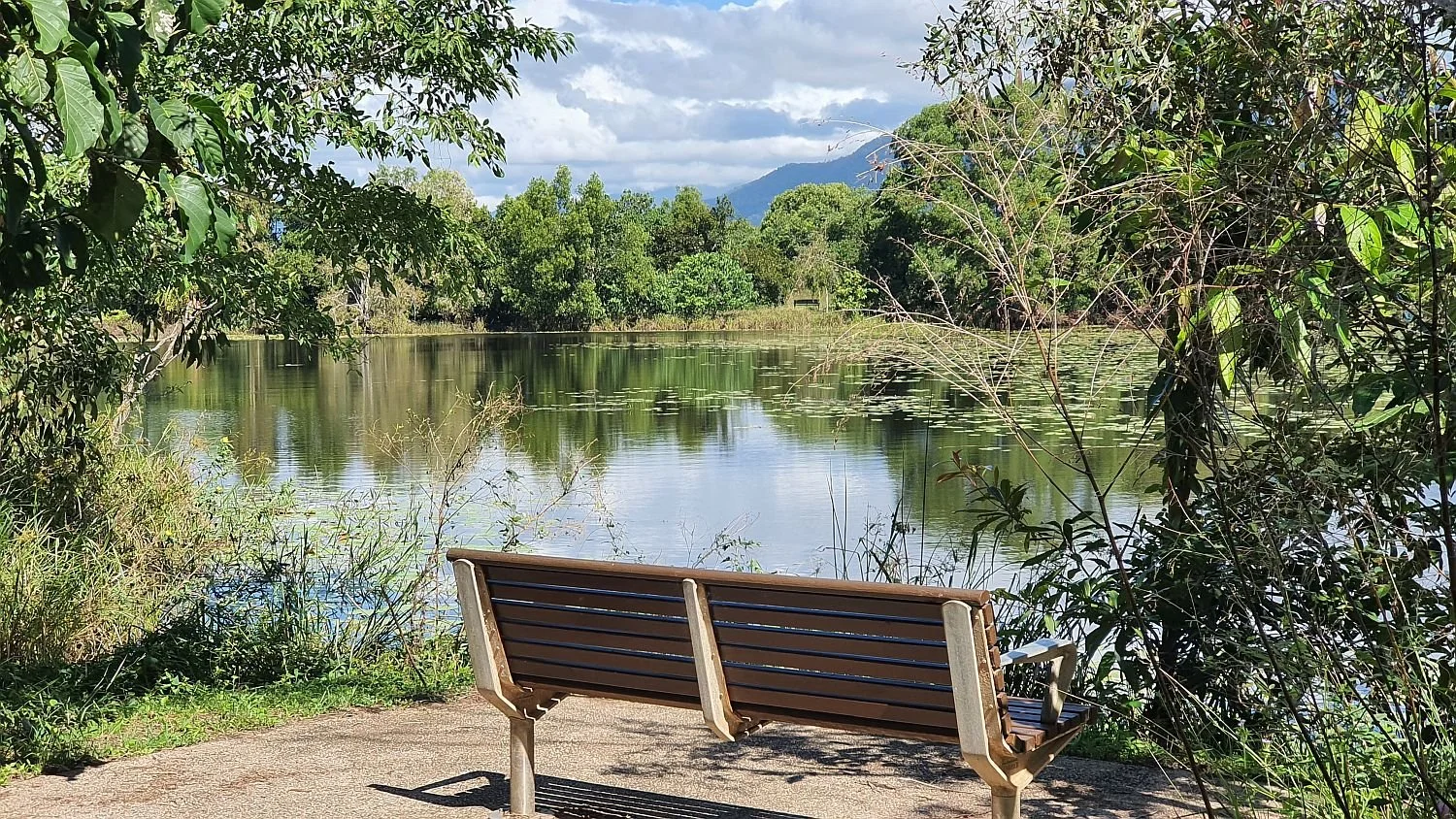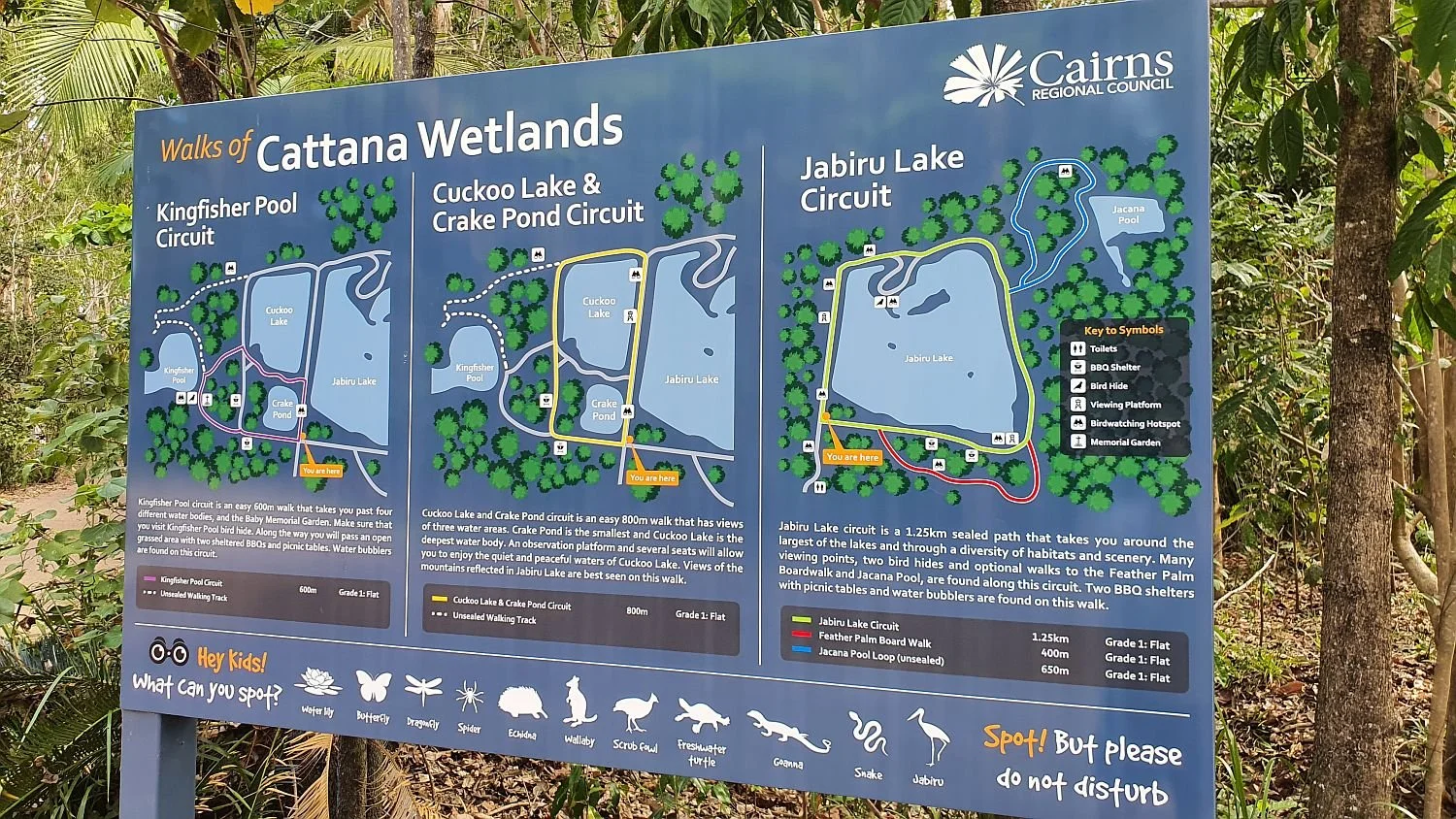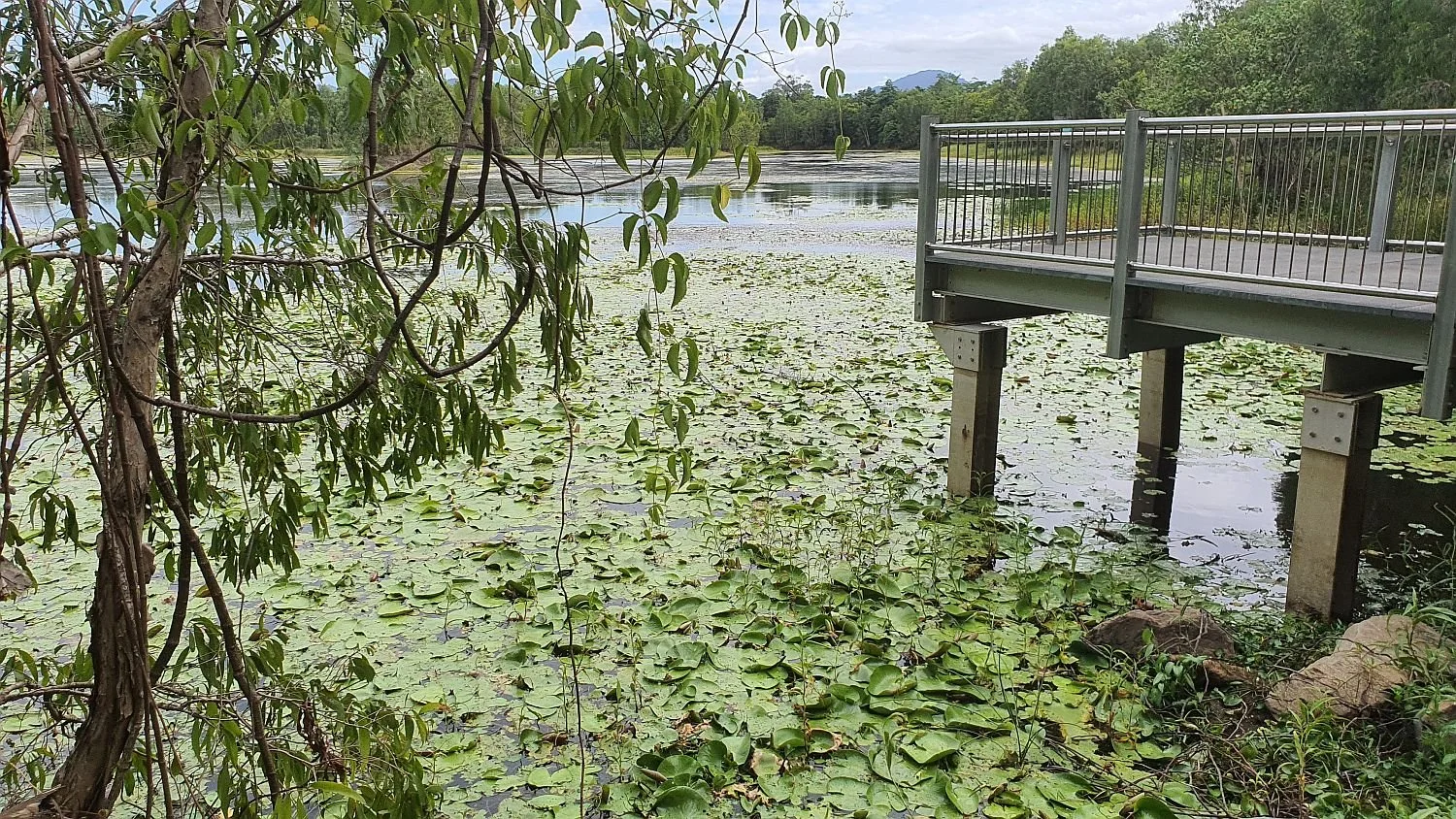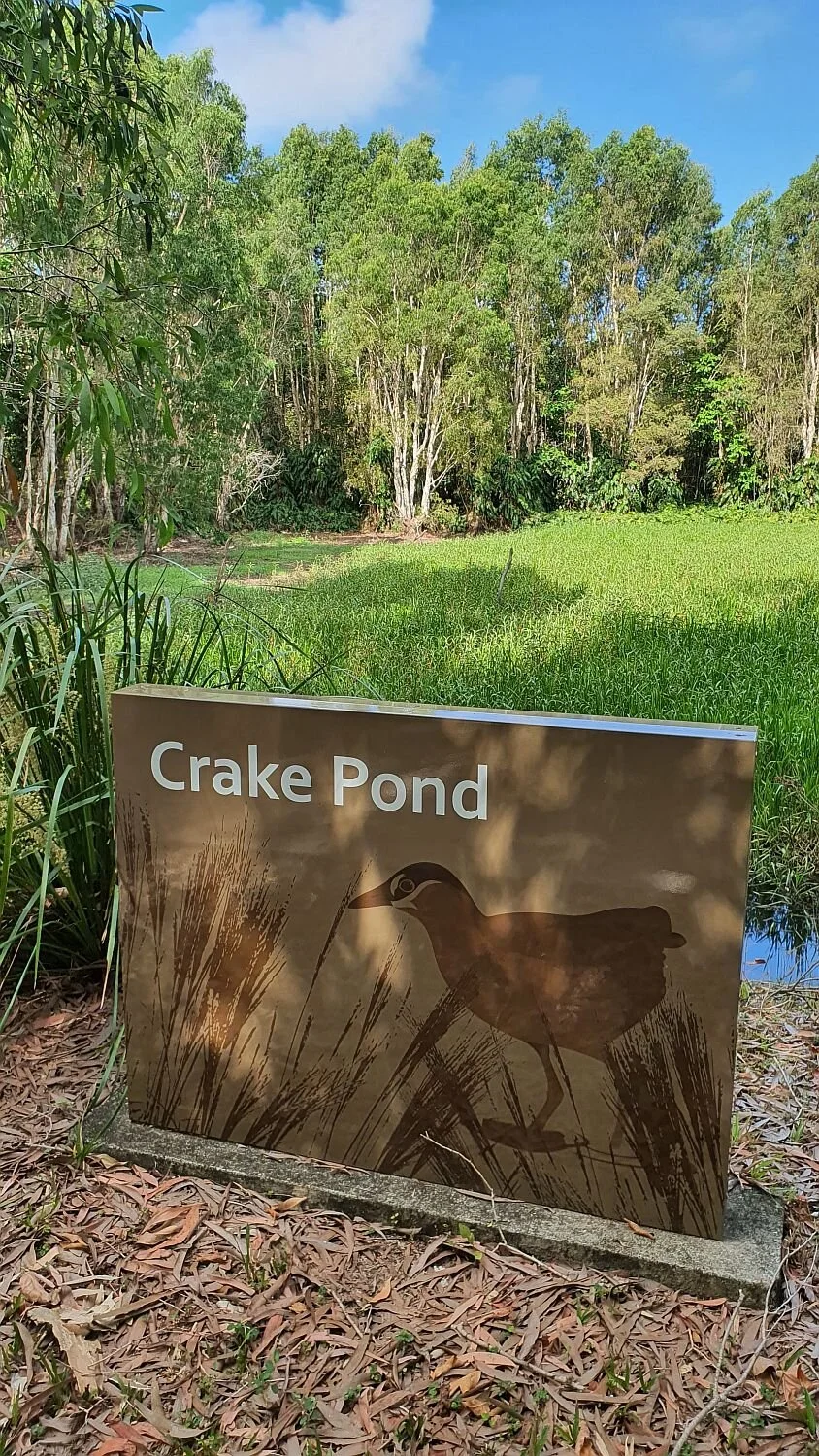
Cattana Wetlands.
Cattana Wetlands - a haven of tranquillity in the suburbia of Cairns.
Macalister Range reflected in Jabiru Lake, Cattana Wetlands
Restored wetlands that historically were cleared for farming and even quarried for sand, Cattana is now being revegetated and nursed back to a wetland paradise.
A boardwalk wends through a feather palm forest. It’s a beautiful walk that evokes the feeling of how the original lowland rainforest would have been.
Cattana Wetlands is a birders paradise.
Jesus birds walk on water!
Otherwise known as the Comb-crested Jacana, they are fascinating to watch as they effortlessly dart across lily pads.
Jabiru Lake
Some 200 different bird species can be found at Cattana - Black-necked Storks (Jabiru), White-browed Crake, Green Pygmy-Goose, Magpie Goose, the Little Pied Cormorant, just to name a few.
Walks of Cattana Wetlands
In 2014 the Cairns Council asked locals to suggest names for the six lakes that comprise Cattana Wetlands, hence we now have each lake with its own name and personality: Kingfisher Pool, Cuckoo Lake, Crake Pond, Jabiru Lake, Jacana Pool and the Fairy Wren Billabong.
Jacana Pool, Cattana Wetlands
Traditionally, the Cattana Wetlands area was home to the Yirrganydji people. The wetlands were an important fishing and hunting area.
Viewing platform
Turtles, which are abundant in the Cattana lakes, formed part of the Yirrganydji diet.
These shy creatures hide when you first approach the lake viewing platforms, but wait for a few minutes in silence and they will soon pop their heads out of the water.
They are delightful to watch.
Rainforest Walk, Cattana Wetlands
Cattana presents a young, evolving forest of paperbark trees (Melaleuca leucadendron).
Paperbark Forest
The nectar of paperbark flowers attracts honey-eaters, lorikeets and fruit bats.
Jabirus
Every Tuesday, a dedicated group of enthusiastic volunteers known as the Jabirus gather at the Cattana Wetlands. With a shared passion for preserving and enhancing the natural environment, these devoted individuals diligently engage in a variety of activities that include weed removal, tree planting, and other essential horticultural tasks. As part of the Green Space Our Place initiative, this team operates under the guidance and support of the Cairns Regional Council.
Understorey species are being intentionally cultivated in order to promote and foster biodiversity within the given environment. Within the wetlands area, birdlife is thriving, and there is now an increasing presence of possums, specifically sugar gliders and striped possums, who have chosen to make this region their home. The mangroves and wetlands around Cattana are progressing spontaneously and expanding their boundaries. Additionally, there are plans underway to further advance the fish habitat in the area as part of upcoming projects.
Exploring Tropical North Queensland
Barron River Walk and Barron Falls / Din Din
Crystal Cascades / Bana Bamburra and Fairy Falls
Freshwater Creek Trail, Redlynch
Jack Barnes Mangrove Boardwalk
Lake Barrine, Yungaburra and Peterson Creek
Lake Morris and Copperlode Falls Dam
Lugger Bay (Kennedy Bay Track), South Mission Beach
coffeeincairns.com.au

